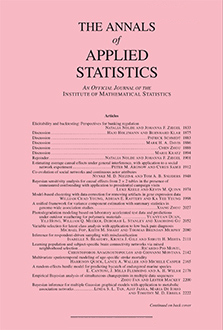Abstract
RNA-sequencing has revolutionized biomedical research and, in particular, our ability to study gene alternative splicing. The problem has important implications for human health, as alternative splicing may be involved in malfunctions at the cellular level and multiple diseases. However, the high-dimensional nature of the data and the existence of experimental biases pose serious data analysis challenges. We find that the standard data summaries used to study alternative splicing are severely limited, as they ignore a substantial amount of valuable information. Current data analysis methods are based on such summaries and are hence suboptimal. Further, they have limited flexibility in accounting for technical biases. We propose novel data summaries and a Bayesian modeling framework that overcome these limitations and determine biases in a nonparametric, highly flexible manner. These summaries adapt naturally to the rapid improvements in sequencing technology. We provide efficient point estimates and uncertainty assessments. The approach allows to study alternative splicing patterns for individual samples and can also be the basis for downstream analyses. We found a severalfold improvement in estimation mean square error compared popular approaches in simulations, and substantially higher consistency between replicates in experimental data. Our findings indicate the need for adjusting the routine summarization and analysis of alternative splicing RNA-seq studies. We provide a software implementation in the R package casper.
Citation
David Rossell. Camille Stephan-Otto Attolini. Manuel Kroiss. Almond Stöcker. "Quantifying alternative splicing from paired-end RNA-sequencing data." Ann. Appl. Stat. 8 (1) 309 - 330, March 2014. https://doi.org/10.1214/13-AOAS687





